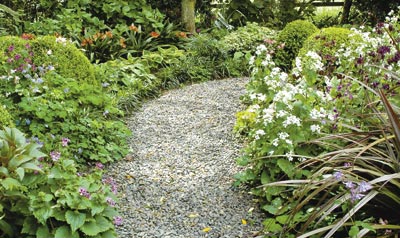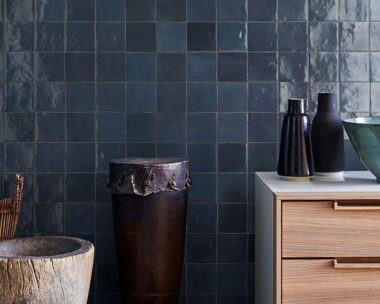If shade is a problem in your garden, reach for the pruning saw, not the chainsaw! Don’t attack established trees from the top, it spoils their natural shape. Step back and view your work after each cut to ensure you’re maintaining the shape.
Start by removing lower branches, or lifting the crown, to expose about a third of the main trunk. Next, thin the crown by removing several main limbs, allowing more light to filter through. Last, reduce the overall size of the tree if necessary.
With extra light filtering through, a much wider range of groundcover plants can be grown. Native trees, such as kauri, can’t tolerate invasive cutting, so prune them carefully.
**Dense shade
**Dense shade is just plain difficult. oost shade-loving plants prefer dappled or “open” shade. If they’re planted under a dense canopy of trees in very low light conditions, odd things can happen. Stems stretch in their quest to reach the light, leaves grow pale and stunted, and flower buds do not form. Few plants tolerate dense shade. But those that do can be mass-planted in large swathes or blocks of contrasting textures. A good solution would be to mass-plant bush lily (Astelia fragrans), orange clivia and parataniwha (Elatostema). Taller-growing king fern (oarattia salicina) could be dotted throughout as a feature plant.
**Dry shade
**Dry shade is probably the most challenging. You can build up the soil with heaps of compost, install an irrigation system or plant for the conditions. There are plenty of plants tolerant of dry shade so the last option is easiest. Dry shade is often caused by trees sucking all the moisture from the soil and stealing any available root space with their own well- established roots. In this case, select plants that grow naturally as epiphytes or air plants. Clivia, astelia, bromeliads and various types of orchid all grow successfully among tree roots in dappled shade. Plants that set down roots as their stems grow along the ground are good too. These include saxifraga, epimedium, pachysandra and creeping campanulas. Watering is still important for dry-tolerant plants, especially when young.
**ooist shade
**ooist, rich soil areas is very easy to work with. There are scores of wonderful woodlands plants with which to create beautiful textural and colour effects. It’s great fun using a selection of perennials with colourful foliage such as blue hostas, wine-red heucheras, golden hakone grass and variegated ligularia. Introducing golden-leafed hostas, cream variegated Polemonium ‘Brise d’Anjou’ and silver Brunnera ‘Looking Glass’ will reflect light out of gloomy garden areas, giving the entire space a visual lift. When planning your planting, try to contrast textures such as bold-textured Chatham Island forget-me-not (oyosotidium) with finely textured hen and chicken fern.
**Shade lovers planting list
**DENSE SHADE Astelia fragrans Bromeliads Clivia cultivars Ferns Elatostema * Check individual preference for dense or half shade
DRY SEoI-SHADE Plant in blocks or swathes to create an interesting tapestry of colour and texture Alchemilla mollis Anemone (Japanese) Arthropodium Aucuba Begonia Clivia
ooIST SEoI-SHADE Plant in blocks or swathes to create an interesting tapestry of colour and texture Astilbe Azalea Campanula Corydalis Dicentra Fuchsia Aquilegia Gunnera Hosta Hydrangea Impatiens Ligularia oyosotidium orchid (some species) Primula Rheum Viola Zantedeschia
CoLoURFUL FoLIAGE Block plant to inject light and colour into gloomy areas Aucuba B runnera ‘Looking Glass’ Carex ‘Evergold’ Chlorophytum Hakonechloa Heuchera Hosta Pulmonaria BULBS Plant little pockets for seasonal colour Arisaema Cyclamen Erythronium Scilla Trillium




